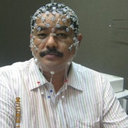The Effects of 4-Hydroxybenzoic Acid Identified from Bamboo (Dendrocalamus asper) Shoots on Kv1.4 Channel.
キーワード
概要
UNASSIGNED
Bamboo shoot has been used as a treatment for epilepsy in traditional Chinese medicine for generations to treat neuronal disorders such as convulsive, dizziness and headaches. 4-hydroxybenzoic acid (4-hba) is a non-flavonoid phenol found abundantly in Dendrocalamus asper shoots (bamboo), fruits (strawberries and apples) and flowers. Kv1.4 is a rapidly inactivating Shaker-related member of the voltage-gated potassium channels with two inactivation mechanisms; the fast N-type and slow C-type. It plays vital roles in repolarisation, hyperpolarisation and signaling the restoration of resting membrane potential through the regulation of the movement of K+ across the cellular membrane.
UNASSIGNED
Chemical compounds from Dendrocalamus asper bamboo shoots were purified and identified as major palmitic acids mixed with other minor fatty acids, palmitic acid, 4-hydroxybenzaldehyde, lauric acid, 4-hydroxybenzoic acid and cholest-4-ene-3-one. The response of synthetic 4-hydroxybenzoic acid was tested on Kv1.4 potassium channel which was injected into viable oocytes that was extracted from Xenopus laevis. The current were detected by the two-microelectrode voltage clamp, holding potential starting from -80 mV with 20 mV step-up until +80 mV. Readings of treatments with 0.1% DMSO, 4-hba concentrations and K channel blockers were taken at +60 mV. The ratio of tail/peak amplitude is the index of the activity of the Kv1.4 channels with n ≥ 6 (number of oocytes tested). The decreases of the ratios of five different concentrations (1 μM, 10 μM, 100 μM, 1 mM and 2.5 mM) were compared with 0.1% DMSO as the control.
UNASSIGNED
All concentration showed statistically significant results with P < 0.05 except for 100 μM. The normalised current of the 4-hba concentrations were compared with potassium channel blockers (TEA and 4-AP) and all groups showed statistically significant results. This study also showed that time taken for each concentration to affect Kv1.4 does not play any significant roles.
UNASSIGNED
4-hydroxybenzoic acid was found to be able to enhance the inactivation of Kv1.4 by lowering the membrane potential so that the abnormal neuronal firing can be inhibited. With IC50 slightly higher than 10 μM, increasing concentrations (100 μM, 1 mM and 2.5 mM) had shown to exhibit toxicity effects. The best concentration from this study is 10 μM with Hill slope of 0.1799.




